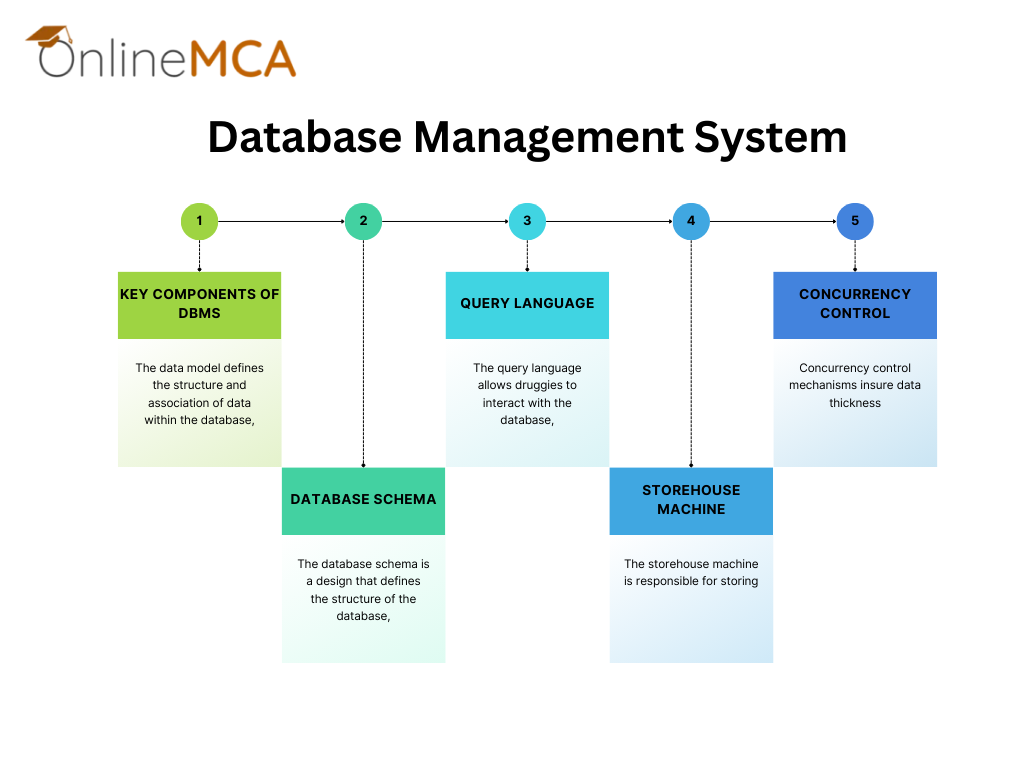In this new age, Database Management System has surfaced as a strategic asset for associations, driving decision-timber, invention, and competitive advantage. At the heart of effective data operation lies the database operation system (DBMS), a software platform that enables associations to store, recoup, and manipulate data efficiently and securely. In this comprehensive blog post, we claw into the complications of database operation systems, exploring their significance, functionalities, crucial factors, and real-world operations.
Understanding Database Management Systems
Database operation systems (DBMS) are software operations that grease the creation, operation, and manipulation of databases. They give an interface for drugs and operations to interact with databases, perform operations similar as data entry, reclamation, revision, and omission, and ensure data integrity, security, and concurrency control. DBMS store data in a structured format, organise it into tables, and apply connections and constraints to maintain thickness and delicacy.
Key Components of DBMS
The data model defines the structure and association of data within the database, specifying the types of data that can be stored, the connections between data realities, and the constraints that govern data integrity. Common data models include the relational model, hierarchical model, network model, and object-acquainted model.

Database Schema
The database schema is a design that defines the structure of the database, including the tables, fields, data types, and connections between realities. It provides a formal description of the database’s logical and physical association, guiding database design, development, and conservation.
Query Language
The query language allows druggies to interact with the database, perform operations similar to data reclamation, manipulation, and aggregation, and induce reports and analysis.
Storehouse Machine
The storehouse machine is responsible for storing and reacquiring data from fragments, managing data storehouse structures similar as tables, indicators, and views, and optimising data access and reclamation performance. It implements data storehouse mechanisms, caching strategies, and indexing algorithms to ensure effective data operation and reclamation.
Concurrency Control
Concurrency control mechanisms insure data thickness and integrity in multi-user surroundings by managing concurrent access to participating data. Ways similar as locking, timestamping, and multi-version concurrency control (MVCC) help data conflicts, insure data insulation, and maintain transactional integrity.
Data Security
Data security features cover sensitive data from unauthorized access, revision, or exposure, icing compliance with sequestration regulations and assiduity norms. DBMS apply authentication, authorization, encryption, and auditing mechanisms to guard data and apply access controls.
Types of Database Management Systems
RDBMS store data in irregular format, organize it into rows and columns, and apply connections between tables using primary and foreign keys. examples include MySQL, PostgreSQL, Oracle Database, Microsoft SQL Garcon, and IBM Db

NoSQL Database Management Systems
NoSQL databases are designed to handle unshaped or semi-structured data, offering inflexibility, scalability, and high performance for operations with different data conditions. Types of NoSQL databases include document-acquainted, crucial-value, columnar, and graph databases. Examples include MongoDB, Cassandra, Redis, Couchbase, and Neo4j.
NewSQL Database Management Systems
NewSQL databases combine the scalability and inflexibility of NoSQL databases with the ACID (Atomicity, thickness, insulation, continuity) parcels of traditional relational databases. They’re designed to meet the performance and scalability demands of ultramodern operations while icing data thickness and integrity. examples include Google Spanner, CockroachDB, and NuoDB.
Object-acquainted Database Management Systems (OODBMS)
OODBMS store data in the form of objects, allowing for complex data structures, heritage, and encapsulation. They’re well-suited for object-acquainted programming languages and operations that bear rich data modelling capabilities. examples include db4o, ObjectDB, and GemStone/S.
Real-World Operations of Database Management Systems
Enterprise Resource Planning (ERP) Systems ** ERP systems integrate core business functions similar as finance, mortal coffers, force chain, and manufacturing into a centralized database, enabling flawless information inflow and collaboration across departments.
Client Relationship Operation Systems
CRM systems store client data, relations, and deals in a centralised database, easing substantiated communication, targeted marketing, and relationship operation.
E-commerce Platforms
E-commerce platforms calculate on databases to manage product registers, force, orders, payments, and client information, icing a flawless and secure online shopping experience.
Content Management Systems (CMS)
CMS platforms use databases to store and manage digital content similar to papers, images, vids, and documents, enabling content creation, publishing, and distribution across websites and digital channels.
Financial Services
Banks, insurance companies, and fiscal institutions use databases to manage client accounts, deals, investments, and nonsupervisory compliance, icing data delicacy, security, and integrity.
Conclusion
In conclusion, database operation systems (DBMS) play a pivotal part in ultramodern data operation, enabling associations to store, recoup, and manipulate data efficiently and securely. By using structured methodologies, advanced technologies, and stylish practices in database design, associations can harness the power of DBMS to drive functional excellence, enhance decision-timber, and achieve strategic objectives. As data continues to grow in volume, haste, and variety, the part of DBMS will only come more critical, guiding associations on their trip to unlock the full eventuality of data-driven perceptivity and invention.




